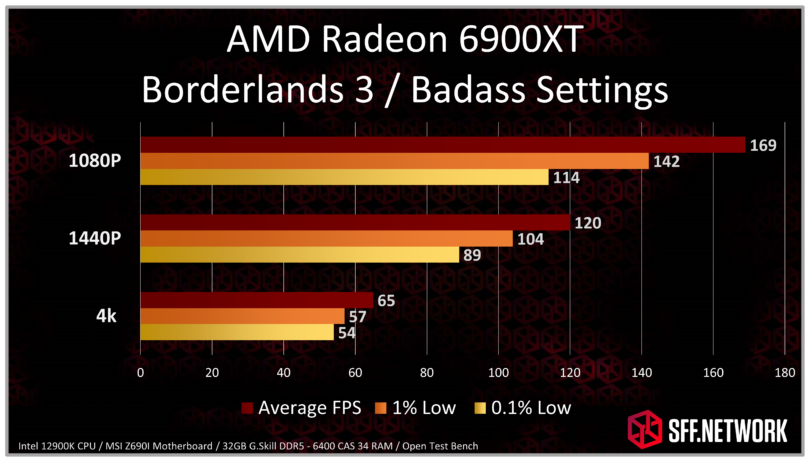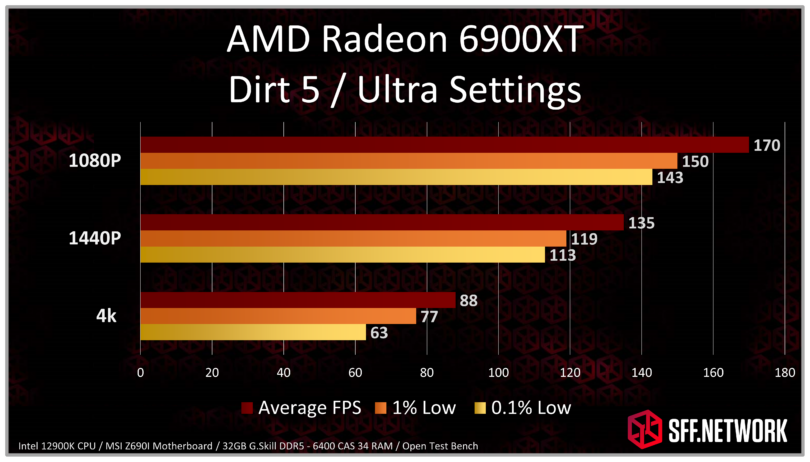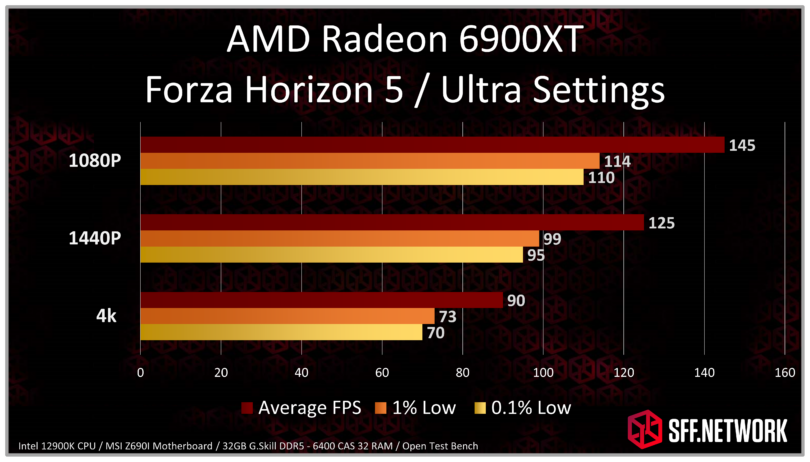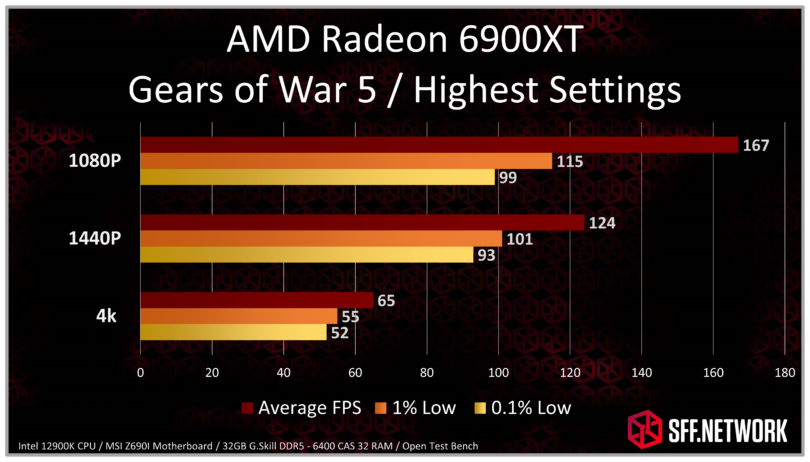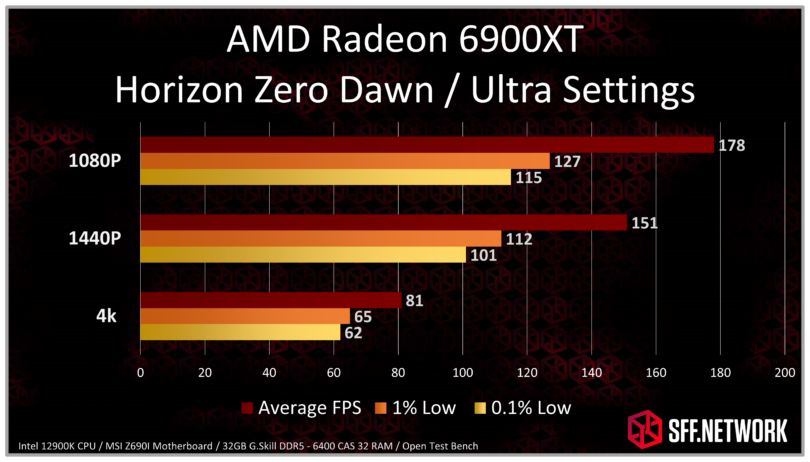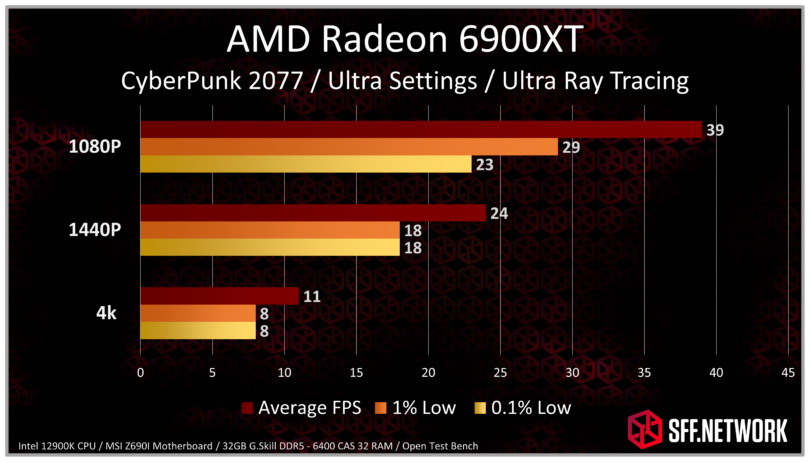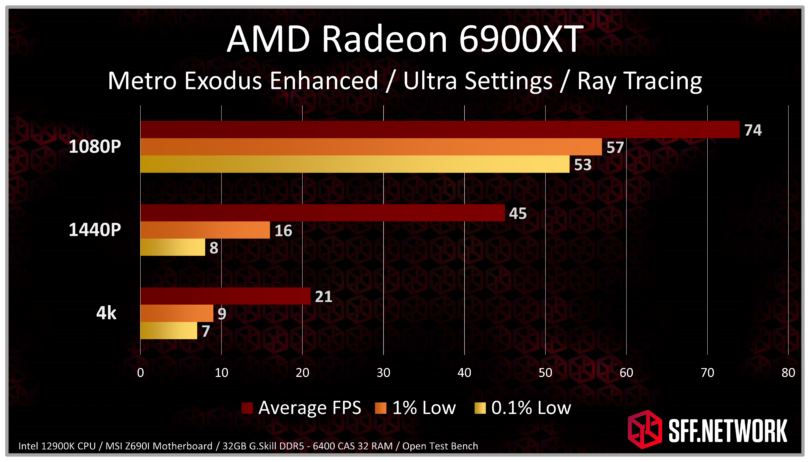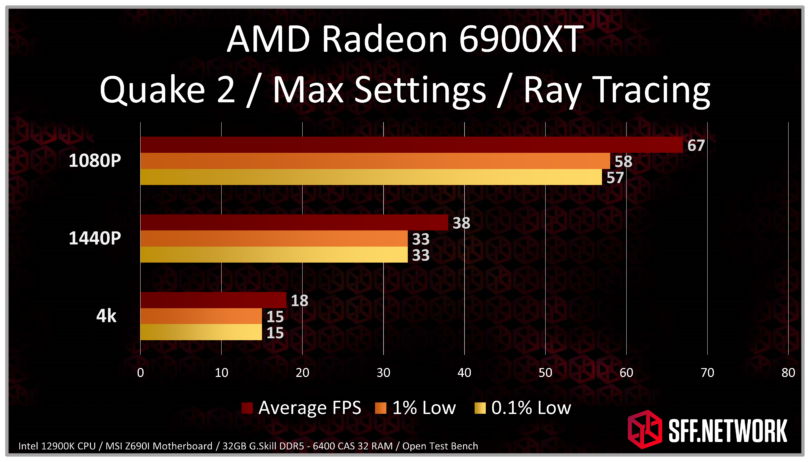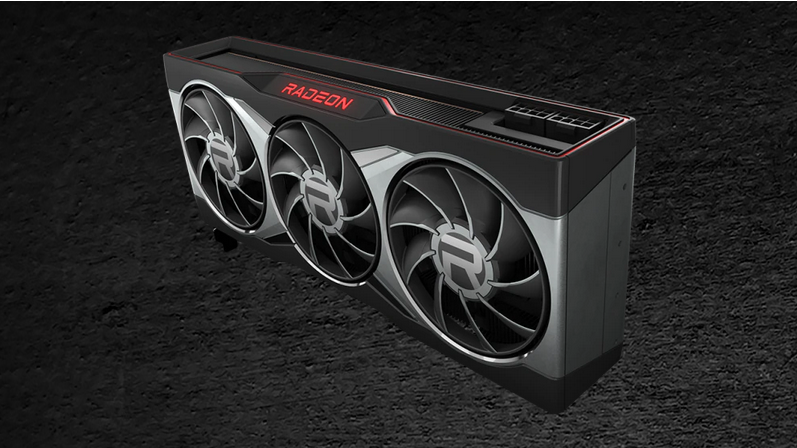
Small Form Factor Network is continuing to update its internal benchmarks charts and I thought I would take a moment to share our AMD Radeon 6900XT reference design results. I purchased this card directly from AMD when they were liquidating them some months ago. I tested it on our 12900K open bench test rig. Let’s get right to the benchmarks.
Test system:
Intel i9-12900K at Stock Settings with 360mm MSI AIO
32GB G.Skill DDR5-6400 CAS 32
MSI Z690I Unify ITX Motherboard
Corsair P3 Plus NVME SSD for game storage
Open air test bench via Xtia Xproto
1000 Watt EVGA PSU
On a side note, this also marks the debut of our new benchmark chart designs.
Starting with Borderlands 3 on Badass Settings, the 6900XT should provide a very good experience at all resolutions. One caveat though is that a variable refresh rate monitor would be the preferred route to play as the 1% and 0.1% lows all suffer substantial drops from the average.
Can the 6900XT run Cyberpunk 2077? The answer is “yes”. Ultra settings in 1080P and 1440P gave a very nice average of 132 and 85FPS respectively. 4K resolution averaged 40FPS however, and which makes it more of a controller-console style frame rate than a PC. Regardless, there were substantial drops to the 0.1% lows in all resolutions. This will show up as the occasional stutter. In practice, I didn’t really notice these while playing, but it’s something to keep in mind if your sensitive to it.
Dirt 5 was great at any resolution. You could get a locked 60FPS at 4K, and a close to locked 120FPS at 1440P. 1080P can push an almost-locked 144FPS. I played this game on a 60hz 4K panel with VSYNC on and it was an excellent gaming experience with the 6900XT.
Forza Horizon 5 is very much like Dirt 5 on the 6900XT, albeit with larger dips in the 1% and 0.1% lows. 1080P at 120FPS will run close enough to locked that you won’t notice drops on a variable refresh rate display, and 4K ran at a very nice locked 60FPS. 1440P could do a locked 90FPS if you can adjust your panels refresh rate. Overall the game ran smoothly, and looked great at any resolution.
I was a little surprised that the 6900XT didn’t manage a fully locked 60FPS at 4K resolution, but overall Gears of War 5 ran very well. Due to the variation of 1% and 0.1% lows, I would strongly advice a VRR display be used in this title. The game should feel like a locked 120FPS at 1080P with that setup.
The 6900XT pushed through to a locked 60FPS at 4K in Horizon Zero Dawn. At 1440P and 1080P, the 6900XT gets pretty close to a locked 120FPS, albeit with some stutters in 1440P. I guess you’ve already figured out what I’m going to say at this point. Use a VRR display for 1440P.
Back to Cyberpunk 2077 but now with Ray Tracing turned on to Ultra. It’s pretty brutal for the 6900XT in this title. 1080P is the only resolution that provides any type of gaming capable play without resorting to some sort of upscaling. Ray Tracing has always been AMD’s Achille’s heel. Unless developers take time to optimize Ray Tracing on AMD GPUs with a console-like granularity, it just doesn’t run well.
The 6900XT doesn’t perform much better in Metro Exodus Enhanced Edition. Only 1080P was truly playable without some sort of upscaling like FSR. Even at 1080P, I suggest you lock to 60FPS, and engage upscaling to try to get a smooth locked 60FPS.
Finally we have Quake 2 Ray Traced Edition. This game uses only path tracing for its lighting. No rasterization. At 1080P, the 6900XT pulled off a nearly locked 60FPS. Raising the resolution to 1440P, we observed a substantial drop to 38FPS average, but the 6900XT still could manage locked 30FPS. At 4K, don’t even bother.
To sum up, the 6900XT is a powerful rasterization GPU, but frankly the Ray Tracing performance can’t hold a candle to Nvidia. If you want Ray Tracing performance, a similarly priced (at the time of writing) RTX 3070 would be a better choice. However, if you don’t really care about Ray Tracing, the 6900XT offers some substantial benefits. The 16GB of VRAM will provide a lot more future proofing as compared to the 8GB on the Nvidia offering. The rasterization performance is excellent, and there are some good deals to be found. I purchased this reference 6900XT for $550 brand new.
That’s our quick benchmarks for the 6900XT as we do some house cleaning on our test bench. Check back soon for 6900XT Rebar On vs Rebar off tests.

